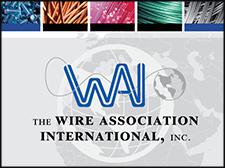Visual Components Robotics OLP launch enables digital production transformation
All-in-one software combines robot programming with existing simulation software
London, UK - 11th September 2023 - Visual Components, the developer of 3D simulation software, today announces the launch of Visual Components Robotics OLP. Via a single software, manufacturers can bring their technology deployments under one banner, improve robot utilisation and enhance production efficiency.
Tailored to accommodate the vast majority of industrial deployments and robot brands, users can benefit from reliable and accurate programming capabilities that are ten times faster than manual processes.
The platform is compatible with the primary robot and cobot brands, including 17 post-processors from companies including KUKA, ABB, YASKAWA and FANUC. Manufacturers can seamlessly transfer their robot programs from Visual Components Robotics OLP to physical robots on the shop floor.
Visual Components Robotics OLP has been brought to market at a time where robots are being underutilized in the manufacturing sector. Time and labour-intensive processes, complex product mixes and skills shortages are persistent challenges that have hindered innovation and blocked progress in digital transformation strategies.
Alongside reduced downtime and complexity involved with robotic deployments, a unified solution provides the basis for employees to be trained across a number of disciplines. This encourages upskilling in the Industry 5.0 era and an opportunity to drive technical skills among the new generation entering the sector. Rather than eliminate jobs, the technology serves to fill skills gaps
.
"Put simply, Visual Components Robotics OLP makes digital production transformation possible. It's more than just a product release; it's a testament to our understanding of industry challenges and continued commitment to addressing them head-on. We're bridging the efficiency gaps and streamlining processes to ensure our customers always stay one step ahead," says Mikko Urho, CEO at Visual Components.
The introduction of Visual Components Robotics OLP follows the company's acquisition of Delfoi Robotics in October 2022. Delfoi Robotics is an industry leading offline robot programming (OLP) solutions provider for the manufacturing industry, with its technology now seamlessly integrated with Visual Components' existing simulation solutions.
***
About Visual Components
Founded by a team of simulation experts and amassing over 20 years in business, Visual Components is one of the pioneers of the 3D manufacturing simulation industry. The organisation is a trusted technology partner to a number of leading brands, offering machine builders, system integrators and manufacturers a simple, quick and cost-effective solution to design and simulate production processes and offline programming offline robot programming (OLP) technology for fast, accurate and error-free programming of industrial robots. For more information please visit: https://www.visualcomponents.com/
Featured Product

The Wire Association International (WAI), Inc.
The Wire Association International (WAI), Inc., founded in 1930, is a worldwide technical society for wire and cable industry professionals. Based in Madison, Connecticut, USA, WAI collects and shares technical, manufacturing, and general business information to the ferrous, nonferrous, electrical, fiber optic, and fastener segments of the wire and cable industry. WAI hosts trade expositions, technical conferences, and educational programs.
